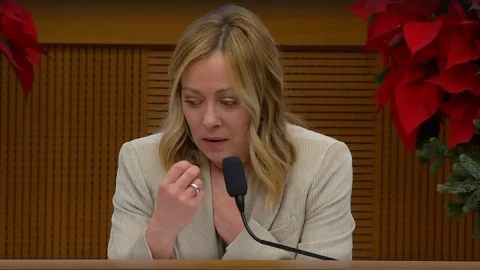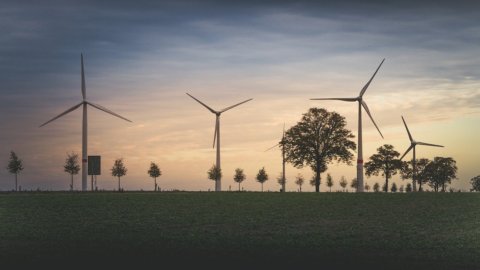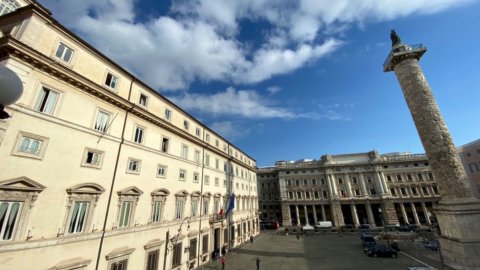Romania is among the countries of South-Eastern Europe to have most blamed the international financial crisis first and then that of the debt of the peripheral countries of the Eurozone, with a GDP dynamic of -7,1% in 2009 and -0,8, 2010% in XNUMX. With the overcoming of the debt crisis and the easing of economic difficulties, exports strengthened and
Romanian economy regained momentum in 2013 growing by 3,5%.
The country thus entered a favorable cyclical phase which continued in the following three years strengthened by domestic demand for private consumption and investments: the increase in the public minimum wage, the low price of energy and the reduction of VAT on food supported consumer confidence and household demand. At the same time,
the availability of European funds (30 billion euros allocated for the period 2014-20) and interest rates at historic lows have favored investments.
In 2016, GDP grew by 4,8%, the highest rate in the last eight years, with the contribution provided by private consumption equal to 6,4pp and that of investments equal to 0,2pp.
The net contribution of exports was instead negative (-4,0pp) due to the higher growth in imports. However, the positive cyclical phase also continued in the first few months of this year: industrial production grew by 5,8% in January with the capital goods sector registering double-digit growth (+10%), while in turn exports also advanced at a double-digit pace ( +13,1% trend in nominal terms). In January, the unemployment rate remained below 5,0%, confirming itself close to the minimum in recent years, and retail sales (excluding motor vehicles), although slowing down, nonetheless grew by 6,5% (in real terms ) in January. For the current year, after the extraordinary growth of 2016, la Intesa Sanpaolo Studies and Research Department expects a slowdown in GDP to 3,4%: although more contained, economic growth will be driven by internal demand, without forgetting the contribution of investments favored by EU funds and public spending fueled by the increase in the deficit. Net exports, due to the growth in imports, will further subtract fuel from economic expansion, with an effect that will continue in 2018 as well.
In January, inflation moved into positive territory (0,1%) and in February it strengthened slightly although remaining very low (0,2%) due to the slight recovery in energy and food prices. All in all,
analysts predict that inflation will remain positive this year (1,5% on average) due to the second-order effects deriving from past wage increases, the expected progressive strengthening of demand, especially public, and rising energy prices. Starting in 2013, the National Bank of Romania (NBR) set the inflation target at 2,5%, with a fluctuation band of +/-1%: against expectations of low inflationary pressures, the NBR it loosened its monetary policy by reducing the policy rate in several steps to the current 1,75%.
Low inflation and still below the target corridor leaves no room for starting a phase of raising the policy rate which instead analysts believe will remain at its lowest until the end of 2017; however, on the money markets, the short-term interest rate (currently at 0,6%) could start to rise even earlier, on the occasion of the announcement by the
European Central Bank to exit quantitative easing. In this scenario, the long-term rate (currently at 4,0%) is also expected to continue to rise.
On the basis of the main liquidity indicators, no critical issues emerge at the moment in a short-term horizon. The ratio of official reserves to short-term external debt is estimated at 1,6 in 2016. The reserve cover ratio, i.e.
the ratio between official reserves and the sum of the current deficit and cumulative maturing financial commitments in 2016 is estimated at 1,4 (ie higher than the unit which represents the alert threshold) and is expected to rise slightly in 2017 to 1,7.
In recent years, the country has significantly improved its budget imbalance: the public deficit, which reached 6,3% of GDP in 2010, gradually decreased to 1,5% in 2015 thanks to prudent fiscal policies, partly as part of the IMF assistance program (March 2011 to September 2015). However,
the public deficit last year, while remaining less than half of its average value from 2008-14,
it widened to 2,4% due to lower tax revenues due to the VAT cut and higher expenditures due to the increase in minimum wages in public administration. For the current year the
European Commission provides that, under current legislation, the public deficit will exceed the parameter set by the Maastricht Treaty of 3,0% of GDP, reaching 3,6%, with the risk that a procedure for excessive deficit could be opened.
Public expenditure will rise from 31,5% to 32,7% of GDP mainly due to the increase in pensions planned for this year. In 2016 the current deficit was 2,4% of GDP, up from 1,2% the previous year, where the external account deficit was kept in negative territory by all its components. The balance of the capital account, however, remained positive and, thanks to the greater inflow of FDI and portfolio investment compared to the previous year, the financial account also went into surplus. For the current year, the current balance is expected to remain negative and widening due to the strengthening of imports.
The prospects for a strengthening of Romania's economic fundamentals over the long term remain positive, subject to a more solid economic dynamics in the Eurozone and the implementation of the reforms necessary to increase the country's competitiveness and its ability to absorb EU funds. On the base of
Global Competitiveness Index (GCI), index calculated from
World Economic Forum (WEF)Between 2007 and 2017, Romania went from a score of 3,97 to 4,3 on a scale ranging from 0 (least competitive) to 7 (most competitive), mainly thanks to the education system.
On the other hand, the position in the infrastructure sector and in the judicial system still appears weak, according to the European Commission,
major reforms still need to be implemented.
An element of Romania's economic vulnerability is represented by external debt which is currently at around 50% of GDP, but could increase due to the current deficit projected to close to 3,0% in the coming years.
Public finances have consolidated over the last five years although budget austerity was partially eased in 2016 and for 2017 the IMF forecasts a further widening of the deficit to 3,7% of GDP. Overall public finance conditions have improved compared to previous years and historically low interest rates on international markets have favored a progressive decline in CDS which are currently at 93bp, well below those of other countries in the area such as Croatia (176bp) and Serbia (199bp). Here then is that the Fitch and S&P agencies give the country a BBB- rating in view of the country's good economic growthHowever, public finances remain the object of attention due to the risk of their excessive increase should fiscal policy accentuate the pro-cyclical orientation. Baa3 is the judgment expressed by Moody's.





